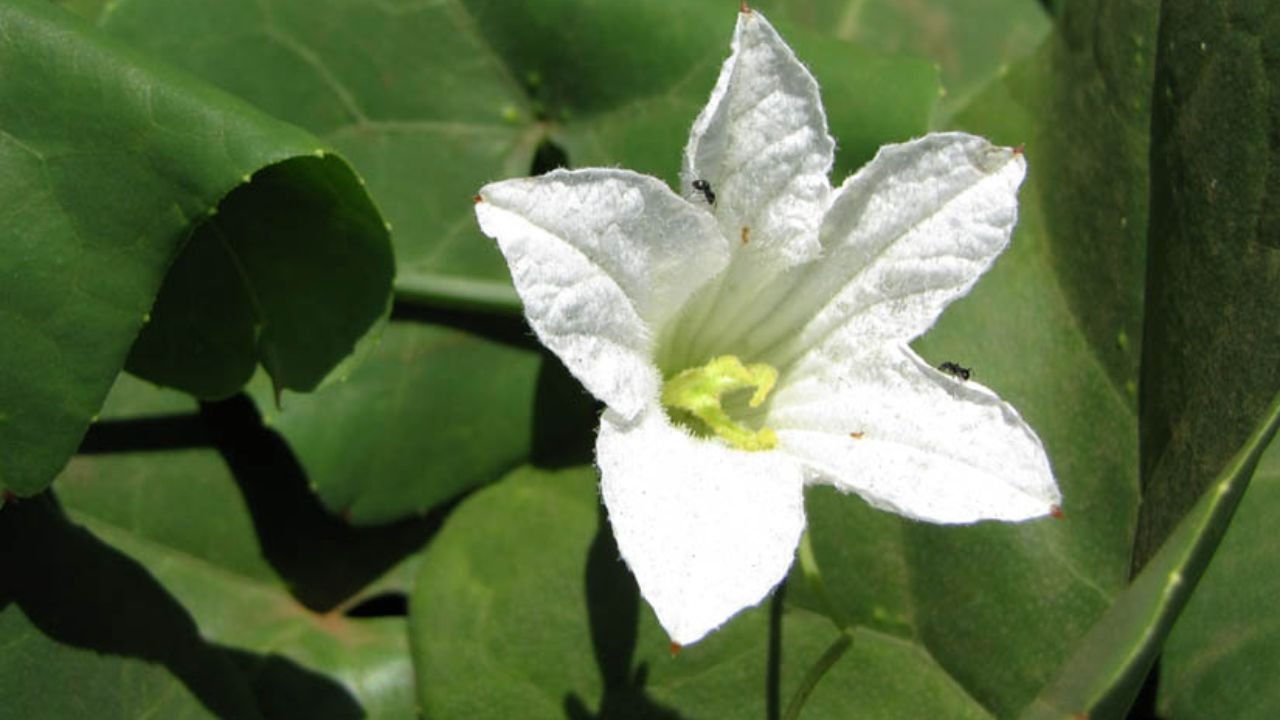Coccinia indica commonly known as Kandoori. It is a member of the Cucurbitaceae family. In this article, we will learn about the position of leaves, flowers, and fruits of Coccinia indica.

Scientific Name: Coccinia indica
Some Basic Information about Coccinia indica
Habit– A perennial climbing herb.
Stem– Weak, aerial, tendril, climber, herbaceous, smooth, solid, angular.
Leaf– Simple, exstipulate, petiolate, alternate, cordate, lobed margin, mucronate apex, multicostate reticulate venation.
Inflorescence– Solitary axillary.
Flower– Ebracteate, pedicellate, actinomorphic, incomplete, unisexual, epigynous, white.
Male flower–
Calyx– Sepals 5, gamosepalous, valvate aestivation.
Corolla– Petals 5, gamopetalous, campanulate, valvate aestivation.
Androecium– Stamens 5, but appear as 3 [(2) + (2) + 1], anthers twisted and basifixed.
Gynoecium– Absent.
Female flower– Calyx and corolla same as in male flower.
Androecium– Absent.
Gynoecium– Tricarpellary, syncarpous, ovary inferior, unilocular, parietal placentation but appears to be axile, with many ovules, style simple, stigmas trifid.
Fruit-Pepo.
Floral formula-
Male flower– Ebr ⊕ ♂ K(5) C(5) A(2)+(2)+1 G0
Female Flower– Ebr ⊕ ♀ K(5) C(5) A0 G(3)
Systematic Position:
Division – Phanerogamia
Subdivision – Angiospermae
Class – Dicotyledonae
Subclass – Pollypetalae
Series – Calyciflorae
Order – Passiflorales
Family – Cucurbitaceae
Genus – Coccinia
Species – indica